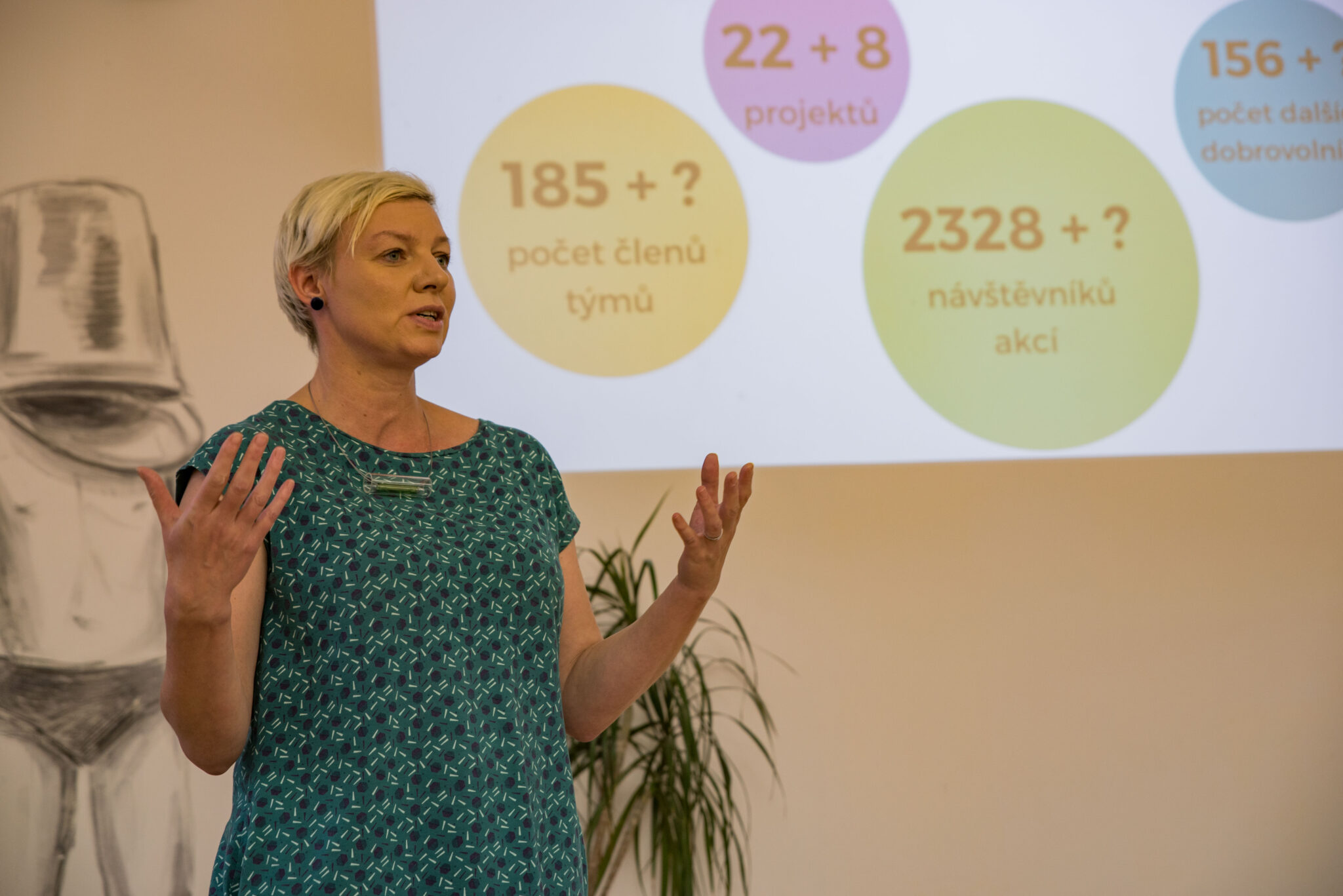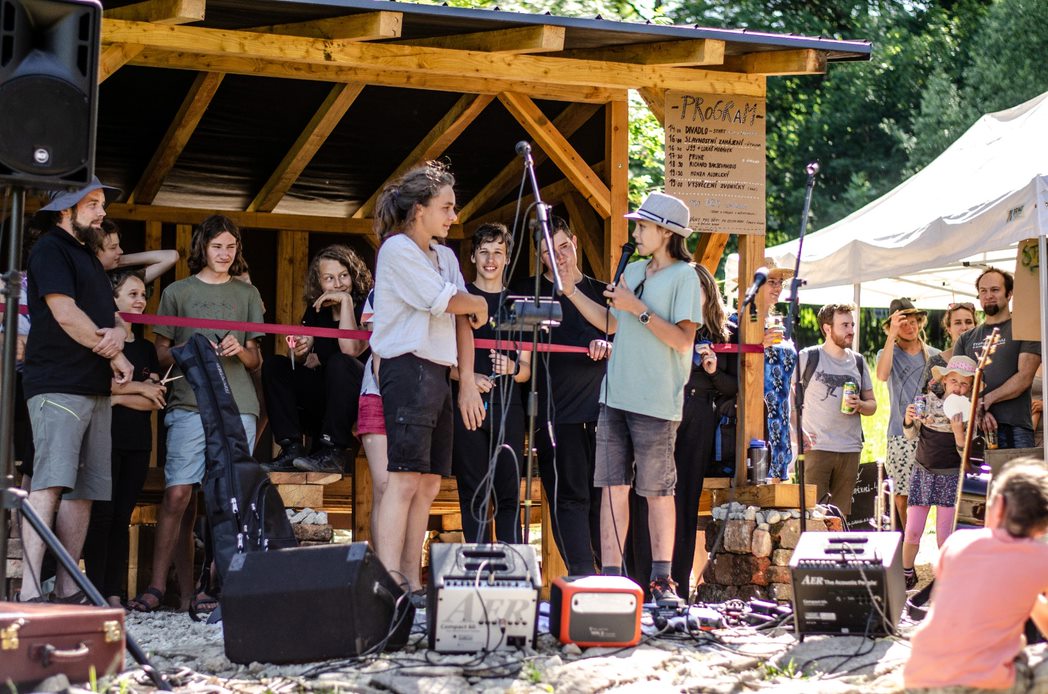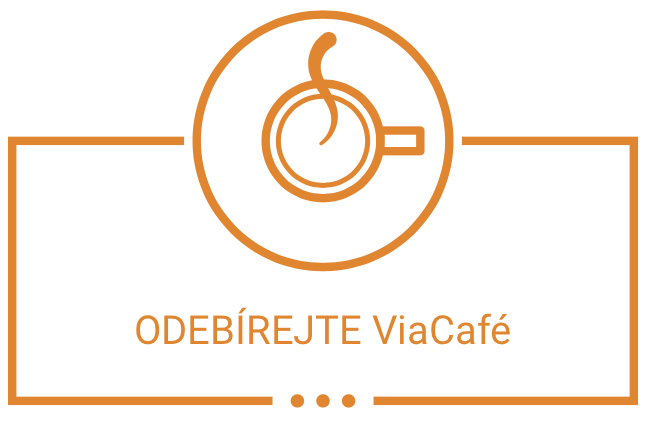A shelter for hikers and tourists in the Rychlebské Mountains, a new bell tower, a fundraiser for sick friends. These are some of the projects organized last year by the children and students supported through Via’s Young Philanthropists program. We asked program manager Vendula Humlová to walk us through the program.
What are Young Philanthropists all about?
In the Young Philanthropists program, we encourage children and young people to help other people in need, their community or the landscape. Their stories then inspire others. The important thing is that the activity is mostly up to them and they can take ownership of the project. Girls and boys as young as 12 can do more than we can imagine, we just need to trust them and give them enough space. It can sometimes be a challenge for us adults not to “interfere” with them, but at the same time be ready to support and help when needed.
How long has the program been running?
This will be our ninth year. We’ve supported nearly 3,000 children and young people since the program began.
And how long have you been doing it?
About three years. I came into the program at a time of considerable uncertainty because of the pandemic. The groups that had already received grants were in a really challenging place when schools closed and people had to isolate, yet most of the groups persevered and were able to carry out their plans. A year later, the same thing happened again and so we tried to adapt the program. We started awarding very small grants of about $90 (CZK 2000). The aim was to get children and young people off their screens and doing something nice for themselves and others. We were surprised by how much interest there was and ended up making these small grants a permanent feature of the traditional program. This year, groups can apply for grants between $140 (CZK 3,000) and $900 (CZK 20,000).
Is there any way to describe the type of children/students who apply to the Young Philanthropists program? Do they have anything in common, family background, where they live, etc.?
At first glance they don’t have much in common and that’s a good thing😊. I really like the diversity of the groups, both in terms of age (from second grade kids to college students) and the diverse backgrounds they come from. The spectrum is very broad – everything from Montessori schools to high schools, special needs schools and mainstream elementary schools to children and young people from a children’s home or institution.
Groups don’t have to apply through schools – for example, a group of friends from Mělník signed up to restore a small area of shrubs that serves as animal habitat in the middle of the fields near their community. Or Tomáš, a 14-year-old boy who organized activities for Ukrainian refugee children and his peers from the city of Zlín. A group of young people from Vysoké Studnice organized a neighborhood fundraising event to raise money for the restoration of the organ in the local church. What unites the teams is their interest in their community and their desire to help.
What makes Young Philanthropists want to help?
Their motivation varies. Sometimes there is a strong personal story that inspires a group to sign up for the program, like David’s group from Olomouc. They decided to organize a fundraiser evening event with entertainment and outreach in memory of their friend Anezka, who had died of cancer. The proceeds of the event “From Anezka for Lily” were intended for a little girl who was diagnosed with leukemia. They would like to hold a similar event every year, with the proceeds going to a different child each time. With other groups, a chance event starts things – like a group of classmates involved in the school parliament in Dolní Žandov got involved after the school received a lot of books as part of an estate. This gave them the idea of launching a book collection and then selling the books to raise money for a boy, Radek, with epidermolysis bullosa (butterfly wing disease). Both groups were very successful and raised almost $4500 (CZK 100,000).
Do the children already have a specific project when they sign up, or do they just want to help and they define the project during the workshop that you lead for each group?
Again, this varies a lot from group to group. Some of them already have a pretty clear outline of what the event should look like. At the workshop they get to clarify, we go into more detail and the group leaves with specific tasks for each member. It also doesn’t hurt if they are unsure of how to carry out their idea at the beginning. At the workshop, they hear about what other groups have done, we discuss different options and gradually get to the planning of the event. The workshop has a basic structure, but in the end each workshop is different because we adapt it to the different groups, taking into account the age, background and level of each group.
What are the main take aways for children involved in the program?
At the end of each year we hold a big meeting where groups from across the country come together. Two things resonate the most there: the experience they have gained and the joy that hosting the event has brought them. For most of them, participation in the program is not the end of giving back – it’s the beginning. Over 90% of them say they want to continue doing something for their community.
Which group’s project do you remember the most?
It’s hard to pick just one. I can think of two very different examples – two teams from completely different contexts. But they both share a huge sense of commitment and great enthusiasm. A group of classmates from the Montessori elementary school in Vápenná, who spent several months restoring a site where a Sudetenland village used to be. They restored a spring, built a bell tower and a shelter for hikers and tourists. To celebrate the opening of the site, they organized a festival with a musical performance, creative workshops and a put on a play. Their event was very successful, with around 250 people coming to the festival. In the second project, a group of Romani girls and boys from Budišov nad Budišovkou organized a singing and dancing talent competition. Participants from all over the area came to the “Budišov Star” event, the performances were top-notch and the concert hall was almost bursting at the seams. The proceeds of the fundraiser were donated to the Krtek Children’s Oncology Foundation.





